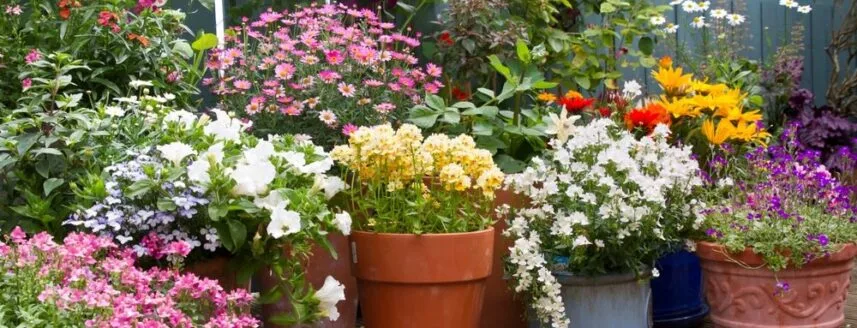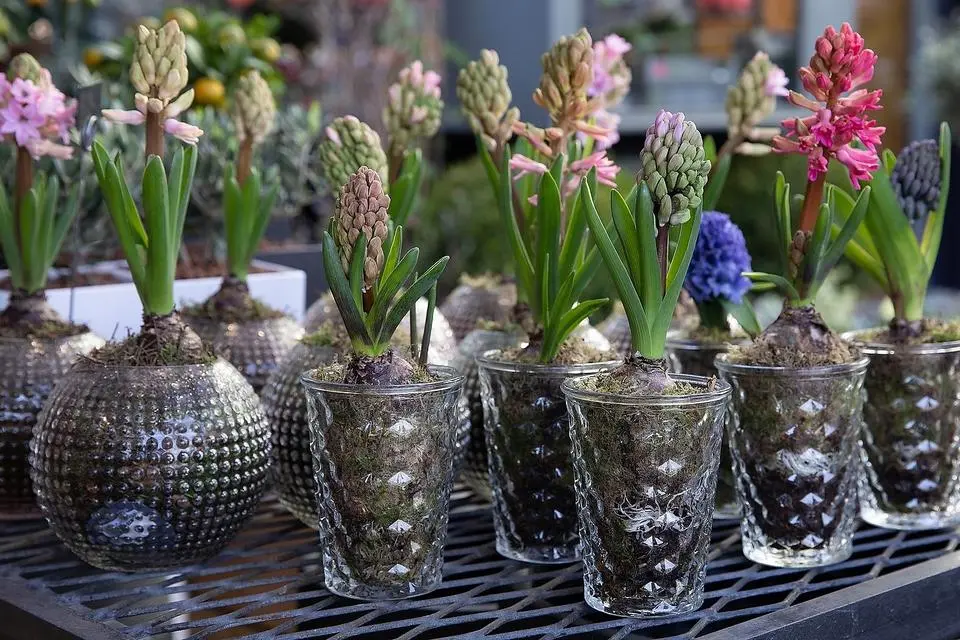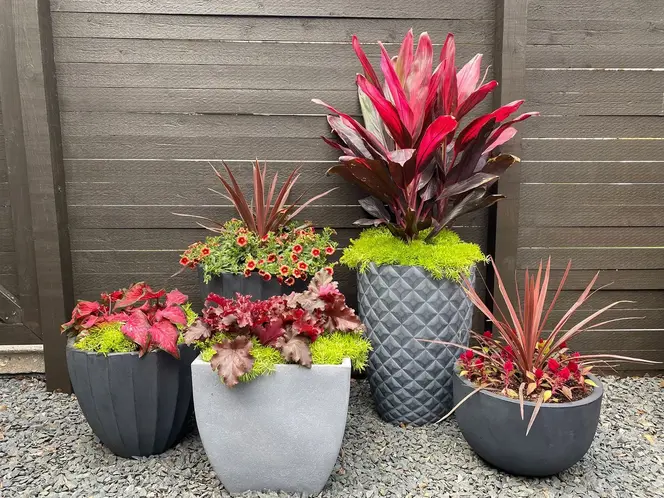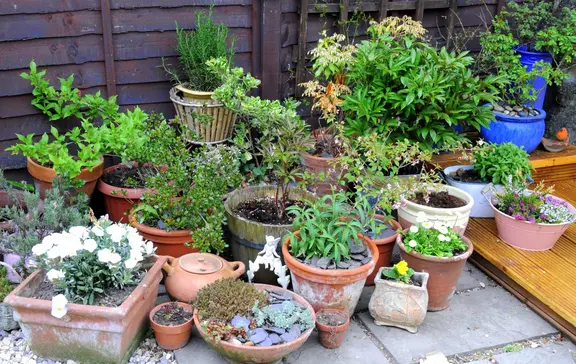Contents
Introduction
If you’re dreaming of a lush, green garden but think you don’t have the space, container gardening might be just what you need! Whether you’re living in a tiny apartment, a cozy condo, or even a small urban house, you can still enjoy the pleasures of growing your own plants. Container gardening is a fantastic way to turn any little nook or balcony into a vibrant garden oasis.
So, what’s container gardening all about? It’s all about growing plants in pots or other containers, rather than in the ground. This method is perfect for urban gardeners who may not have access to a traditional garden plot. Plus, it’s super flexible—whether you have a sunny balcony, a shady window ledge, or just a small corner of your kitchen, you can grow a wide variety of plants right where you are.
Why should you dive into DIY container gardening? For starters, it’s a budget-friendly way to get into gardening. You don’t need fancy equipment or expensive soil; you can use items you already have at home, like old buckets, coffee cans, or even plastic bottles. And the best part? You get to design your garden exactly the way you want it. Paint your pots, mix your own soil blends, and choose the plants that make you happiest.
Urban environments are bustling with concrete and steel, but with a little creativity, you can transform your space into a green retreat. DIY container gardening lets you customize your plants and containers to fit your unique style and space constraints. It’s all about making the most of what you’ve got and adding a touch of nature to your everyday life.
So, whether you’re looking to grow fresh herbs for your kitchen, vibrant flowers for your balcony, or even a few homegrown veggies, this guide will walk you through everything you need to get started. From choosing the right containers to picking the perfect plants and keeping them healthy, we’ve got you covered.
Get ready to roll up your sleeves and dive into the world of DIY container gardening. Your urban oasis awaits!
Getting Started with Container Gardening
Ready to dive into container gardening but not sure where to start? No worries! Let’s break it down step by step so you can get your green thumbs working in no time. Container gardening is a fantastic way to bring a bit of nature into your urban space, and it’s easier than you might think.

Choosing the Right Containers
First things first: you need the right container for your plants. But don’t stress—this doesn’t mean you have to head to a garden store and spend a fortune. In fact, you can use a bunch of items you already have around the house!
- Material Options: Containers come in all sorts of materials, like plastic, ceramic, metal, and even biodegradable options. Plastic pots are lightweight and come in various sizes, making them a great choice for beginners. Ceramic pots add a touch of style but can be heavy and breakable. Metal containers are durable but may need extra care to prevent rust. For a more eco-friendly approach, look for biodegradable pots that decompose naturally over time.
- Size and Shape: Think about what kind of plants you want to grow. Small herbs might be happy in a small pot, while larger vegetables or flowers will need bigger containers. Shape matters too—round, square, or hanging pots all offer different ways to fit into your space.
- Drainage Considerations: Proper drainage is crucial because plants don’t like their roots sitting in water. Make sure your containers have drainage holes at the bottom. If not, you can easily drill a few yourself or add some small stones to the bottom of the pot to help with water flow.
Essential Tools and Supplies
Before you start planting, make sure you have a few basic tools and supplies. Here’s what you’ll need:
- Basic Gardening Tools: You don’t need a full tool kit, but a few essentials will make your life easier. A small trowel is perfect for digging, while pruners help with trimming. A watering can or hose will keep your plants hydrated.
- Soil and Fertilizers: Good soil is key to healthy plants. Look for a potting mix designed for container gardening—it’s lighter and drains better than regular garden soil. For fertilizers, choose one that’s appropriate for your plants, whether they’re veggies, herbs, or flowers. A balanced fertilizer will help your plants grow strong and vibrant.
Getting started with container gardening is all about making smart choices and being a bit creative. You don’t need a lot of space or fancy equipment—just the right containers, some basic tools, and a bit of enthusiasm. With these essentials in hand, you’re ready to turn any small corner into your own green paradise. Happy gardening!
DIY Container Ideas
So, you’re excited about container gardening and ready to get creative! The great thing about container gardening is that it gives you the freedom to experiment with all kinds of containers and designs. Why settle for boring pots when you can turn everyday items into unique plant homes? Let’s explore some fun and budget-friendly DIY container ideas that will make your garden stand out.

Recycled and Upcycled Containers
One of the best ways to start container gardening is by using what you already have. Not only is this eco-friendly, but it also adds a personal touch to your garden.
- Old Pallets and Wooden Crates: Have an old pallet or wooden crate lying around? They make fantastic garden containers! Simply line them with landscape fabric to keep the soil from falling out, then fill with potting mix. These rustic containers are perfect for growing herbs, flowers, or even small vegetables.
- Repurposed Plastic Bottles and Jars: Before you toss those plastic bottles or jars, think about their potential as plant pots. Cut plastic bottles in half to create small planters or use jars for mini herb gardens. You can even paint or decorate them to match your style. Just remember to poke a few drainage holes in the bottom to keep your plants happy.
Unique and Creative Containers
Looking to add a bit of flair to your garden? Here are some quirky ideas that will not only house your plants but also make a statement.
- Hanging Planters: Elevate your gardening game with hanging planters. Use items like old colanders, baskets, or even worn-out boots. Simply add some soil, plant your favorites, and hang them up. These planters are great for adding greenery at eye level and saving floor space.
- Stacked Containers: Want to grow more in less space? Try stacking containers to create a vertical garden. You can use stackable pots or get creative with old crates and boxes. This setup is perfect for small spaces like balconies or tiny yards, and it adds a charming, layered effect to your garden.
Customizing Containers
Make your containers truly your own with a bit of decoration and personalization.
- Painting and Decorating: Unleash your inner artist by painting your containers. Use bright colors or patterns to match your garden theme. You can also add decals, mosaic tiles, or even fabric for a unique touch. Just make sure to use non-toxic paint that’s safe for plants.
- Adding Labels: Keep track of what you’re growing by adding labels to your containers. You can use chalkboard paint for a reusable label that you can easily update, or simple plant markers for a quick and easy solution. It’s a practical way to remember what’s in each pot and adds a bit of charm to your setup.
DIY container gardening is all about having fun and being resourceful. By using recycled items, adding a touch of creativity, and customizing your containers, you can create a garden that’s both unique and personal. So, grab those old items, get decorating, and watch your urban oasis come to life!
Selecting Plants for Container Gardens
Now that you’ve got your containers ready, it’s time to pick the perfect plants for your urban garden. Choosing the right plants can make all the difference between a thriving garden and one that’s less successful. Don’t worry if you’re new to gardening—this guide will help you select plants that are well-suited for containers and easy to care for.

Choosing the Right Plants
When it comes to container gardening, not all plants are created equal. Some plants thrive in containers, while others might struggle. Here’s how to pick the best ones for your setup:
- Herbs and Vegetables: If you love cooking with fresh ingredients, consider growing herbs and vegetables. Herbs like basil, mint, and cilantro are perfect for containers because they don’t need a lot of space and can be harvested regularly. Vegetables like cherry tomatoes, peppers, and lettuce also do well in pots. Just make sure your container is big enough to accommodate their roots and has good drainage.
- Flowers and Ornamental Plants: Want to add a splash of color to your space? Opt for flowering plants and ornamental grasses. Petunias, marigolds, and geraniums are great choices for containers because they produce vibrant blooms and are fairly easy to care for. Ornamental grasses can add texture and movement to your garden, making it visually interesting.
Planting Considerations
To ensure your plants thrive in their containers, keep these tips in mind:
- Sunlight Requirements: Different plants have different sunlight needs. Some plants love the sun and need at least 6-8 hours of direct light a day, while others prefer partial shade. Check the sunlight conditions in your space and choose plants that will be happy in those conditions. If your space gets little natural light, consider low-light plants or those that can tolerate shade.
- Watering Needs: Plants in containers often need more frequent watering than those in the ground because they dry out faster. Be sure to choose plants with similar water requirements for each container, making it easier to keep them properly hydrated. For example, succulents and cacti need less water and can handle drier conditions, while herbs and vegetables generally need regular watering.
Selecting the right plants for your container garden is all about matching their needs with your space and conditions. By choosing plants that are well-suited for containers and understanding their sunlight and water requirements, you’ll set yourself up for gardening success. So, whether you’re growing fresh herbs, colorful flowers, or delicious veggies, you’re well on your way to creating a thriving urban garden!
Planting and Maintenance
Congratulations! You’ve chosen your containers and picked out some fantastic plants. Now it’s time to get those plants into their new homes and keep them thriving. With a bit of know-how and a few simple steps, you’ll have a beautiful, healthy container garden in no time. Let’s walk through the basics of planting and maintaining your container garden.
Planting Techniques
Getting your plants into their containers correctly is crucial for their growth and health. Here’s how to do it right:
- Proper Planting Depth: When planting, make sure your plants are set at the right depth in the container. The top of the root ball should be level with the surface of the soil. If you plant too deep, the roots might suffocate; too shallow, and the plant may not get enough support. For seedlings, gently loosen the roots before planting to help them spread out and establish themselves.
- Soil Preparation: Start with a high-quality potting mix designed for container gardening. It’s lighter and drains better than garden soil, which helps prevent waterlogging and root rot. Mix in some compost or a slow-release fertilizer to give your plants a nutrient boost. Fill the container with soil, leaving about an inch of space at the top to make watering easier.
Ongoing Care
Keeping your container garden healthy requires a bit of regular attention. Here’s what to keep in mind:
- Watering Schedule: Containers can dry out quickly, so it’s important to water your plants consistently. Check the soil regularly; if it feels dry an inch below the surface, it’s time to water. Use a watering can or hose with a gentle stream to avoid washing away the soil. Early morning is the best time to water, allowing plants to dry out before the evening and reducing the risk of disease.
- Fertilizing: Container plants need regular feeding because nutrients in potting soil can get used up quickly. Use a balanced fertilizer according to the package directions, usually every 4-6 weeks. Organic options like compost tea or liquid seaweed can also provide a gentle nutrient boost.
- Pruning and Harvesting: To keep your plants in top shape, remove any dead or yellowing leaves regularly. For herbs and vegetables, frequent harvesting encourages new growth and prevents plants from becoming overgrown. Pruning helps maintain plant health and shape, and it can also promote better air circulation.
Maintaining a container garden is all about keeping a watchful eye and making small adjustments as needed. By planting correctly, sticking to a watering schedule, and providing regular feeding and pruning, you’ll help your plants thrive and enjoy a lush, green garden right in your urban space. With these tips, your container garden will be blooming and producing in no time!
Seasonal Considerations
Container gardening isn’t just for the warm months—each season brings its own set of opportunities and challenges for your urban garden. Understanding how different seasons affect your plants can help you keep your garden thriving year-round. Let’s dive into some tips for gardening through the changing seasons!
Spring and Summer Gardening
Spring and summer are the prime growing seasons for most plants, and it’s the perfect time to start or rejuvenate your container garden. Here’s how to make the most of these sunny months:
- Warm-Season Plants: This is the time to plant those heat-loving veggies and flowers. Think tomatoes, peppers, cucumbers, and vibrant flowers like petunias and marigolds. These plants thrive in the warmth and sunshine of spring and summer. Make sure to water regularly, as containers can dry out quickly in the heat.
- Managing Heat and Sun: While many plants love the sun, extreme heat can be tough on them. If your containers are in direct sunlight, consider using shade cloth or placing them in partial shade during the hottest parts of the day. Also, keep an eye on soil moisture—plants in containers may need extra watering when temperatures rise.
Fall and Winter Gardening
As temperatures drop, your container garden will need a bit of extra care to survive the cooler months. But don’t worry, there are plenty of plants that can handle the chill and add some winter cheer to your space.
- Cold-Tolerant Plants: In fall, you can start planting cool-season crops like kale, spinach, and broccoli. These plants are hardy and can withstand cooler temperatures. Winter is also a great time for ornamental plants like pansies and snapdragons, which can add color to your garden even in the cold.
- Protecting Containers from Frost: Cold weather can be tough on your plants and containers. To protect them, consider moving your containers to a more sheltered spot, like against a wall or under a roof overhang. You can also insulate your containers with materials like burlap or foam to keep the roots warm. For very cold climates, bring smaller pots indoors or use frost cloths to cover them during freezing temperatures.
Gardening through the seasons requires a bit of planning and adjustment, but with the right approach, your container garden can flourish all year long. By choosing appropriate plants for each season and taking steps to protect them from extreme weather, you can enjoy a vibrant and resilient garden no matter what the calendar says. Happy gardening through every season!
Troubleshooting Common Issues
Even with the best care, container gardens can face a few bumps along the way. But don’t worry—most issues are easy to spot and fix with a little know-how. Let’s tackle some common problems you might encounter and how to solve them, so your garden stays healthy and vibrant.
Pest Control
Pests can be a nuisance in any garden, but when plants are confined to containers, they can sometimes become more noticeable. Here’s how to keep those unwanted visitors in check:
- Identifying Common Pests: Look out for signs of common garden pests like aphids, spider mites, and whiteflies. Aphids often cluster on the undersides of leaves, while spider mites leave fine webbing on the plant. Whiteflies are tiny, white, and can be seen flying up when you disturb the plant.
- Natural Remedies: Before reaching for harsh chemicals, try natural pest control methods. Neem oil is a great organic option that helps manage a range of pests. You can also use insecticidal soap, which is effective against soft-bodied insects. For a more hands-on approach, gently rinse your plants with a strong stream of water to dislodge pests or introduce beneficial insects like ladybugs that prey on aphids.
Dealing with Plant Diseases
Plant diseases can affect container gardens just like they do traditional gardens. Spotting and treating these issues early can save your plants from serious damage:
- Symptoms and Solutions: Common symptoms of plant diseases include yellowing leaves, spots, or wilting. Fungal diseases like powdery mildew show up as white, powdery patches on leaves, while bacterial diseases might cause dark, water-soaked spots. To combat these issues, ensure proper air circulation around your plants by spacing them out and avoid overhead watering, which can promote fungal growth. If you spot disease, remove affected leaves and treat with appropriate fungicides or bactericides.
- Preventive Measures: Keeping your garden clean can help prevent many diseases. Regularly remove fallen leaves and debris from your containers, and avoid using soil from your garden, as it can carry pathogens. Always use fresh potting mix and clean your tools to reduce the risk of spreading disease.
With these tips, you can tackle common gardening problems head-on and keep your container garden thriving. By staying vigilant and using natural or preventive measures, you can maintain a healthy garden that continues to bring joy and beauty to your urban space. Happy gardening, and here’s to a problem-free garden!
Expanding Your Urban Garden
If you’ve caught the container gardening bug, you might be thinking about how to grow your green space even further. Whether you want to add more plants, make better use of your available space, or get involved with your local gardening community, there are plenty of ways to expand and enhance your urban garden. Let’s explore some exciting options to take your garden to the next level!
Creating a Garden Layout
Maximizing your garden space can make a huge difference in how productive and enjoyable your garden is. Here’s how to create an effective layout:
- Maximizing Space: Think vertically to make the most of your space. Use shelves, plant stands, or hanging planters to add layers to your garden. Vertical gardening solutions, like wall-mounted planters or trellises, are great for growing climbing plants like beans or cucumbers, and they save precious floor space.
- Integrating with Urban Spaces: Make your container garden blend seamlessly with your urban environment. For balconies, use rail planters or window boxes to add greenery without taking up floor space. If you have a small yard or rooftop, consider grouping containers in various heights and arrangements to create a lush, layered look.
Community Involvement
Gardening is more enjoyable and rewarding when you share the experience with others. Here’s how to get involved and expand your gardening community:
- Sharing and Networking: Join local gardening clubs or online forums to connect with fellow urban gardeners. These communities are great for exchanging tips, sharing resources, and getting inspiration. Many cities also have community gardens where you can rent a plot and collaborate with others.
- Learning and Contributing: Attend local gardening workshops or events to learn new techniques and meet other enthusiasts. Volunteering in community gardens or participating in urban gardening projects can also be a fantastic way to give back and gain new insights.
Expanding your urban garden is all about exploring new possibilities and making the most of your space. By using creative layouts and getting involved with the gardening community, you can enhance your gardening experience and enjoy a richer, more productive green space. So go ahead, try new ideas, connect with others, and watch your urban garden flourish!
Conclusion
You’ve explored the ins and outs of container gardening, from choosing the right containers and plants to tackling seasonal challenges and common issues. Now it’s time to put all that knowledge into action and start creating your very own urban oasis!
Container gardening is an incredibly rewarding hobby that allows you to bring a touch of nature into even the smallest spaces. Whether you’re growing fresh herbs for your kitchen, vibrant flowers for your balcony, or tasty veggies for your table, you have the power to transform your urban environment into a green haven.
Here’s a quick recap of what we’ve covered:
- Choosing the Right Containers: Pick containers that suit your space and plant needs, with good drainage and suitable materials.
- DIY Container Ideas: Get creative with recycled and upcycled materials to make unique, personalized plant pots.
- Selecting Plants: Choose plants that fit your sunlight and water conditions, whether you’re looking for herbs, flowers, or veggies.
- Planting and Maintenance: Follow proper planting techniques and stay on top of watering, fertilizing, and pruning to keep your plants healthy.
- Seasonal Care: Adapt your gardening practices to suit the changing seasons, protecting plants from extreme weather and choosing season-appropriate varieties.
- Troubleshooting Issues: Address common problems like pests and diseases with natural remedies and preventative measures.
- Expanding Your Garden: Explore ways to make the most of your space and connect with your gardening community for a richer gardening experience.
With these tips and tricks, you’re well-equipped to start or enhance your container gardening journey. Remember, gardening is as much about the joy of the process as it is about the end results. Don’t be afraid to experiment, learn, and grow—both your plants and your gardening skills.
So grab your containers, choose your plants, and get started on creating a beautiful and thriving urban garden. Enjoy the process, savor the results, and let your garden become a source of pride and relaxation. Happy gardening!



